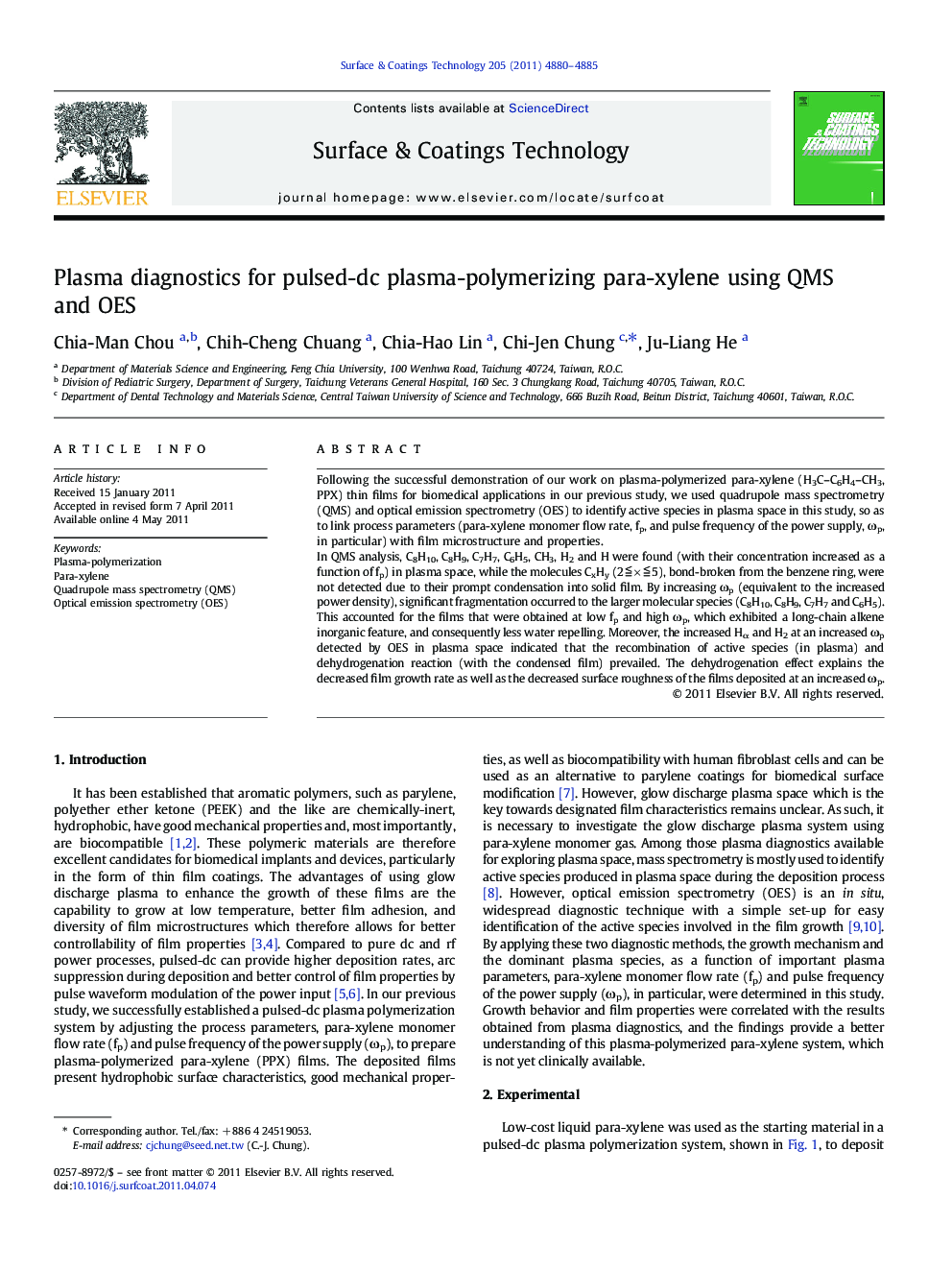| Article ID | Journal | Published Year | Pages | File Type |
|---|---|---|---|---|
| 1658526 | Surface and Coatings Technology | 2011 | 6 Pages |
Following the successful demonstration of our work on plasma-polymerized para-xylene (H3C–C6H4–CH3, PPX) thin films for biomedical applications in our previous study, we used quadrupole mass spectrometry (QMS) and optical emission spectrometry (OES) to identify active species in plasma space in this study, so as to link process parameters (para-xylene monomer flow rate, fp, and pulse frequency of the power supply, ωp, in particular) with film microstructure and properties.In QMS analysis, C8H10, C8H9, C7H7, C6H5, CH3, H2 and H were found (with their concentration increased as a function of fp) in plasma space, while the molecules CxHy (2 ≦ × ≦ 5), bond-broken from the benzene ring, were not detected due to their prompt condensation into solid film. By increasing ωp (equivalent to the increased power density), significant fragmentation occurred to the larger molecular species (C8H10, C8H9, C7H7 and C6H5). This accounted for the films that were obtained at low fp and high ωp, which exhibited a long-chain alkene inorganic feature, and consequently less water repelling. Moreover, the increased Hα and H2 at an increased ωp detected by OES in plasma space indicated that the recombination of active species (in plasma) and dehydrogenation reaction (with the condensed film) prevailed. The dehydrogenation effect explains the decreased film growth rate as well as the decreased surface roughness of the films deposited at an increased ωp.
► QMS and OES used to identify active species in plasma space of this deposition system. ► Para-xylene monomer flow rate (fp) and pulse frequency of power supply (ωp) adjusted. ► In QMS, all detected species increased as a function of fp. ► At an increased ωp, OES detected increased Hα and H2.
